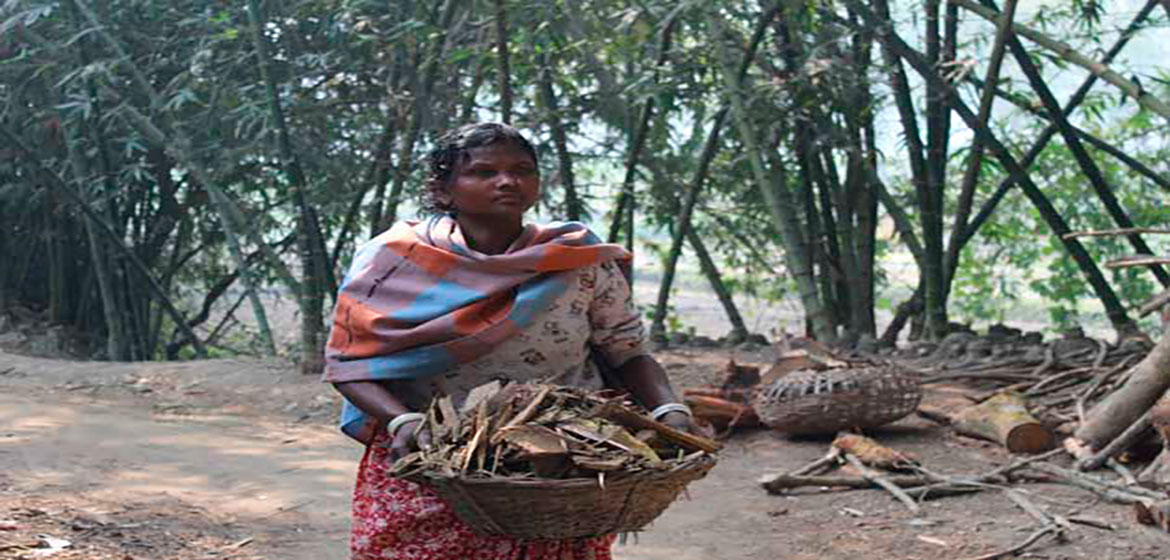By Sopho Kharazi
STEPANTSMINDA, Georgia, (IPS) - On Aug. 9 the observance of the International Day of the World’s Indigenous Peoples will take place in the Economic and Social Council Chamber at the United Nations Headquarters in New York, bringing together U.N. agencies and member states, civil society and indigenous peoples’ organisations.
This year’s day is themed “Indigenous Peoples’ Migration and Movement.” It examines conditions in the territories of indigenous peoples; causes of migration, trans-border movement and displacement; and how to reinvigorate the identities of indigenous peoples and protect their rights internationally.
In an event organised by the Secretariat of the U.N. Permanent Forum on Indigenous Issues, a panel will focus discussion on indigenous peoples living in “urban areas and across international borders”.
Indigenous people have unique languages, follow diverse traditions, have a special relationship with their land and have different ideas about the concept of development. However, instead of nurturing and preserving the uniqueness of these people, they are being neglected by the governments and communities of the countries in which they live.
“Despite their cultural diversity and homelands across 90 countries, [indigenous peoples] share common challenges related to the protection of their rights as distinct peoples. Three hundred and seventy million indigenous peoples make up less than five percent of the world’s population but account for 15 percent of the poorest,” Irina Bokova, director general of U.N. Educational, Scientific and Cultural Organisation (UNESCO), at last year’s event.
The situation is worsened by the fact that their identities and rights to “lands, territories and resources” are being challenged. All together, land dispossession or forcible removal of indigenous peoples from their land, “poverty, militarisation, natural disasters, lack of employment opportunities, and the deterioration of traditional livelihoods,” represent push factors leading to the migration of indigenous peoples to urban areas, to the U.N.
One of the most vivid examples of land dispossession is the case of the Ogiek community from Kenya, east Africa.
In 2015, the Siemenpuu Foundation, a Finish non-governmental organisation (NGO) that supports environmental and democratic initiatives, Peter Kitelo, a Kenyan from the Ogiek community who lived in Mountain Elgon Forest.
The Kenyan government transformed some parts of the forest into “game reserves” while other parts of forest were sold as private property. All these actions led to the eviction of the Ogiek from their lands.
Migration from their land does not only mean the loss of property for the Ogiek. According to Kitelo, Ogiek people “don’t conserve the forest. They look at [a] forest as you look at [a] human being. Like it’s just there.”
These words, on the one hand, demonstrate the special relationship between indigenous peoples and their lands. On the other hand, they show how land dispossession underestimates identities and the sense of self-determination of indigenous peoples.
Today, approximately 40 percent of Latin America’s indigenous peoples live in cities, to the Permanent Forum on Indigenous Issues.
Despite this, nobody talks about how indigenous peoples alter after migrating to urban areas. It is well-known that indigenous peoples face hardships integrating into society as they are frequently neglected, deprived of health services, education and proper employment. However, this still does not demonstrate the emotional and mental struggles of indigenous migrants.
In an with NGO Rio on Watch, José Urutau Guajajara, one of the key leaders in the movement for indigenous rights in Rio de Janeiro, Brazil, said that since the dominant culture within the city “is very strong, they [indigenous peoples] change.”
“The head changes and the person changes. Indigenous people don’t believe in themselves. They reject themselves. This rejection comes from the influence of the dominant culture, in all its forms: spiritual, ethnic, in the language, and the entire culture in general.
“It’s a psychological erasure, a complete erasure. It’s very difficult to practice your culture, especially in urban spaces and in the communities. You’ve got to be living with relatives, or else you don’t practice and you’re swallowed up by the dominant culture. So you can’t reject it,” Guajajara had said.
This idea is supported by Caroline Stephens, who examines impacts of urbanisation on indigenous peoples in her book State of the World’s Minorities. to her, indigenous youth, who are sometimes victims of racism in cities, stop recognising themselves as indigenous as they consider their origin and distinct appearance the reason for their victimisation. This shows how marginalisation and discrimination forces indigenous peoples living in urban areas to consciously reject their self-identification.
In order to solve the problem accompanying indigenous migrations, the U.N. Permanent Forum on Indigenous Issues has published some .
First, relevant states should cooperate with indigenous peoples in order to establish centres for them in urban areas. These centres should provide medical and legal assistance to indigenous migrants.
Second, relevant states should recognise the rights of indigenous peoples in accordance to the Declaration on the Rights of Indigenous Peoples and should help forcefully displaced indigenous migrants return to their communities.
Finally, the U.N. that relevant states should cooperate with indigenous peoples in order to employ them and help them develop economically.
As Bokova stated, “this will not only be beneficial to indigenous peoples but for all of humanity and our planet.”
Source:
Related to SDG 10: Reduced inequalities and SDG 11: Sustainable cities and communities



